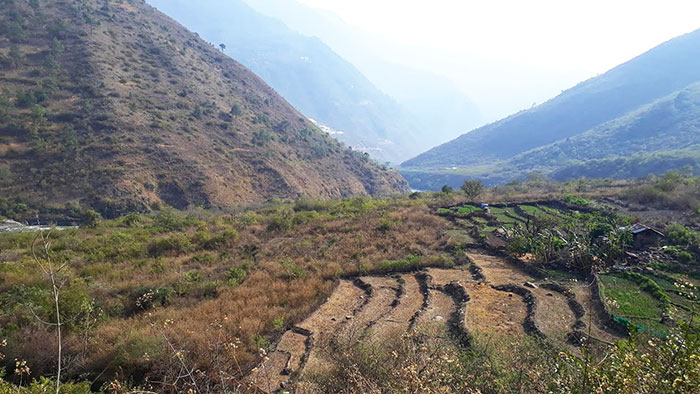Neten Dorji | Trashiyangtse
A decade ago, people in Khamdang, Trashiyangtse, harvested rice twice from Tshotsang area, but today more than 100 acres of wetland in the area are left fallow.
A farmer, Ugyen Wangdi, 41, said his families did not buy imported rice when they cultivated paddy fields in Tshotsang. “My field turned into a grazing land today.”
Residents say increasing human-wildlife conflict and lack of irrigation water forced them to leave the land fallow.

Fallow land in Tshotsang
A villager, Dorji, said floods damaged the irrigation canal and they could not repair it, as the canals were on rocky areas in many locations. “We couldn’t do anything but watch our fields turn into bushes.”
He said the area is fertile and reviving the fallow lands could help the country’s effort to achieve food sufficiency.
Villagers say electric fencing and proper irrigation canal could help them.
“If the government supports us, we can pump water from Drangmechu,” Ugyen Wangdi said.
Khamdang gup, Norbu, said if all people were willing to cultivate the land again, the gewog administration was going to provide them electric fencing.
“We asked people to clear bushes, but only a few households did it. Not many people are interested in agriculture work as they earn between Nu 500 to Nu 900 a day working as labourers,” he said.
The dzongkhag chief agriculture officer, Kuenzang Peldon, said the agriculture sector would support if farmers are committed to work. “But it doesn’t make sense if farmers aren’t willing to work after spending huge expenditure. It’s just a waste of resources.”
She said they needed a strong commitment from farmers. “We targeted to revive about 10 acres for early chili plantation once but people refused to cooperate.”
Agriculture officials said, as per their policy to revive fallow land, they gave more importance to agriculture after the country was affected by Covid-19. “Shortage of manpower and absence of young people in rural families to take-up the farming activities are the main reason for keeping lands fallow,” said Kuenzang Peldon.
To revive the fallow land, the dzongkhag agriculture sector supports supplying electric fencing, developing land, irrigation canal and forming farmers’ groups in the gewog.


